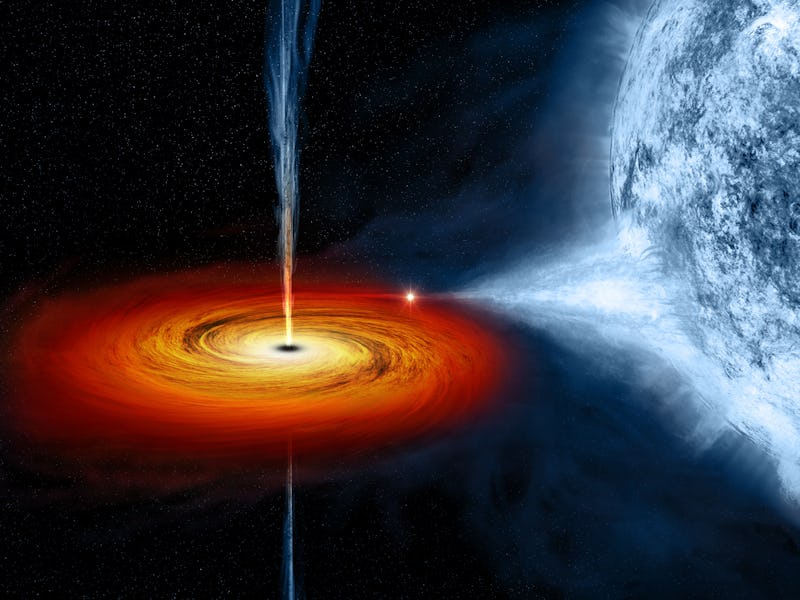The fastest-growing black hole feasts on one Sun a day
That's a hefty meal.

If you're a growing black hole in the vast universe, you need a pretty good nutritional plan to make you one of the most swole celestial objects in the universe.
A team of astronomers has finally determined what a supermassive black hole's daily meal prep entails, and it is a lot of work.
The findings were detailed in a study published this week in the Monthly Notices of the Royal Astronomical Society.
Recent observations using two telescopes, the 10-meter Keck telescope in Hawaii and the 8-meter Very Large Telescope in Chile, astronomers observed a supermassive black hole that is 34 billion times the mass of the Sun.
The amount of matter that a supermassive black hole can devour depends on its mass.
Just for comparison, the supermassive black hole at the center of the Milky Way is a mere 4 million times the mass of the Sun.
“The black hole’s mass is also about 8,000 times bigger than the black hole in the centre of the Milky Way,” Christopher Onken, a researcher at the Australian National University, who led the team behind the new researcher, said in a statement. “If the Milky Way’s black hole wanted to grow that fat, it would have to swallow two-thirds of all the stars in our Galaxy.”
The really, really supermassive black hole in question is located in an extremely active galaxy known as a quasar, which emits a huge amount of energy. The light that the astronomers are observing from the quasar is 12.5 billion years old, therefore the black hole exists in the very early universe, just 1.25 billion years after the Big Bang.
That means that the black hole managed to get to its massive size in a relatively short amount of time, making it the most massive black hole observed during this period of time in the early universe.
It is also the fastest-growing black hole ever observed. So, astronomers just had to ask; what's in its diet?
The team of researchers concluded that the black hole feasts on the equivalent of one Sun a day, or four Earths per second.
Of course, when we say eat, we're referring to the process by which black holes grow in size by swallowing up their surrounding matter, primarily stars, through their powerful gravitational tug.
“How much black holes can swallow depends on how much mass they already have," Fuyan Bian, an astronomer at the European Southern Observatory (ESO), and a member of the team behind the research, said in the statement. “So, for this one to be devouring matter at such a high rate, we thought it could become a new record holder. And now we know.”
By calculating the mass of the black hole, the astronomers will be able to find out more about its host galaxy through further observations.
However, they are still unsure whether the extremely bright quasar galaxy is a one-of-a-kind giant for its early time, or if this supermassive black hole simply swallowed all of its surrounding matter to grow into its size.
Abstract: From near-infrared spectroscopic measurements of the Mg II emission line doublet, we estimate the black hole (BH) mass of the quasar, SMSS J215728.21–360215.1, as being (3.4 ± 0.6) × 1010 M⊙ and refine the redshift of the quasar to be z = 4.692. SMSS J2157 is the most luminous known quasar, with a 3000 Å luminosity of (4.7 ± 0.5) × 1047 erg s−1 and an estimated bolometric luminosity of 1.6 × 1048 erg s−1, yet its Eddington ratio is only ∼0.4. Thus, the high luminosity of this quasar is a consequence of its extremely large BH – one of the most massive BHs at z > 4.